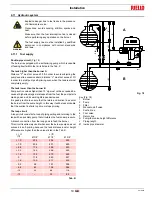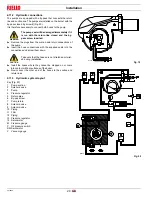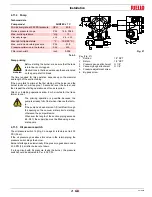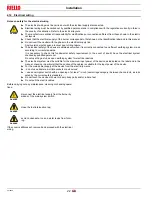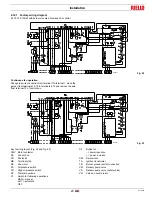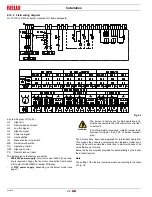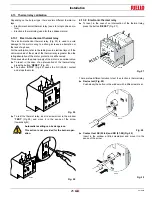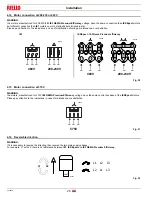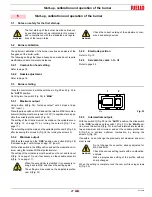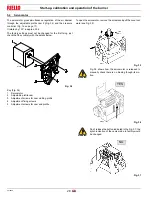
Maintenance
33
2916050
GB
Flame inspection window
Clean the flame inspection window (Fig. 44).
Flame sensor
Clean the glass cover from any dust that may have accumulated.
flame sensor 1)(Fig. 45) can be removed by pulling it outward
forcefully.
Servomotor
Disengage the cam (Fig. 34 on page 28) from the servomotor and
turn it backwards and forwards by hand to make sure it moves free-
ly.
Nozzles
It is advisable to replace nozzles once a year during periodical
maintenance. Do not clean the nozzle openings;
Hoses
Check that these are in good conditions.
Pump
The pump delivery pressure must be stable at 290 PSI.
The suction must be less than 6.5 PSI.
Unusual noise must not be evident during pump operation.
If the pressure is found to be unstable or if the pump runs noisily,
the flexible hose must be detached from the line filter and the fuel
must be sucked from a tank located near the burner. This measure
permits the cause of the anomaly to be traced to either the suction
line or the pump.
If the pump is found to be responsible, check to make sure that the
filter is not dirty. The vacuum gauge is installed up-line from the fil-
ter and consequently will not indicate whether the filter is clogged
or not. If the problem lies in the suction line, check to make sure
that the filter is clean and that air is not entering the piping.
Filters
Check the following filters: on line 1), in pump 2), at nozzle 3), and
clean or replace as required (Fig. 46).
If rust or other impurities are observed inside the pump, use a sep-
arate pump to suck out any water and other impurities that may
have deposited on the bottom of the tank.
Burner
Make sure that the screws securing the electrical leads in the burn-
er connections are fully tightened.
Clean the outside of the burner, taking special care with the linkag-
es joints and cam.
Fuel tank
Approximately every 5 years, suck any water on the bottom of the
tank using a separate pump.
Fig. 44
D709
Fig. 45
D709
D1232
D707
Fig. 46

